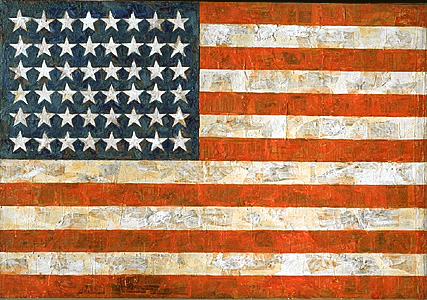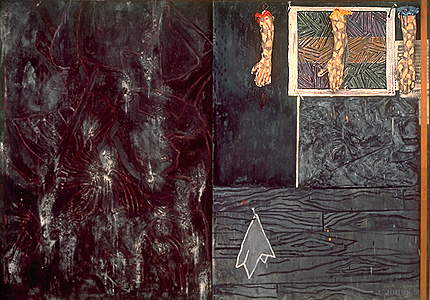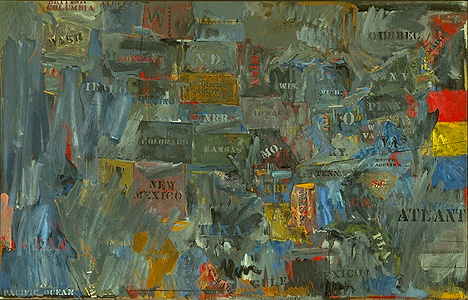Jasper Johns is an American contemporary artist who appeared on the New York art scene in the 50s (1) and has been an important figure in modern American art since. He spent his childhood in the South during the Great Depression and his parents never made it through the tough times, apparently, as they got divorced after Johns’ birth. As a result, Johns spent his childhood in the homes of relatives.(2) He is said to have had no contact with any “real” painters or artists during his childhood, so it is amazing how he even got interested in art in the first place during this period. He has recalled the period before, saying "In the place where I was a child, there were no artists and there was no art, so I really didn't know what that meant. I think I thought it meant that I would be in a situation different than the one that I was in."(3)
He studied at SC for three semesters after high school and then moved to NYC after his army duty at the age of twenty-four. He destroyed all of his previous work and set out to erase all traces of stylistics resemblences from his art.2 His surviving pieces all clearly had his touch – his preference of gridded, repeated forms, cast faces and such – but they also had similarities with Schwitters’ and Cornell’s works.(2)
In 1954-1955, he painted his breakthrough painting, Flag. Inspired by a dream in which he saw the American Flag, Johns made an American flag using strips of newspaper to form a base and overpainting the flag on this layer with a quick-drying wax-based encaustic after trying to achieve the wanted effect with enamel house paint and deciding against it. He must have enjoyed painting in quick but distinct layers of paint, or maybe he was just so pleased with the result, that he used the same method for some of his other paintings like Target with Plaster Casts (1955), White Flag (1955) and Three Flags (1958). Note that he was very much into the American flag… White Flag was also an American flag, albeit a washed out one.

Flag, 1954-1955, Jasper Johns.
Johns also used targets as motifs in many of his paintings. Of course his paintings of targets weren’t simply concentric cirles: “An air of Surrealism surrounded the colored plaster-cast body fragments set in lidded boxes atop the first two target pictures, then dispersed as Johns focused more exclusively on flat signs.”(2) Which also makes note of another motif Johns liked using: dismembered body parts. If you look at some of his later paintings as well, you’ll see for example three arms hanging by a nail, or a leg that’s hanging in an L shape from the upper right corner of one of his paintings.

Perilous Night, 1982, Jasper Johns.
Here’s a nice little link with a pretty decent look at one of his paintings, Perilous Night.
 Numbers in Color, 1958-1959, Jasper Johns.
Numbers in Color, 1958-1959, Jasper Johns.
A few more of his paintings that I thought were better than his others:

Dancers on a Plane, 1980-1981, Jasper Johns.

False Start, 1959, Jasper Johns.
References
1. Johns, J., 1930-. Jasper johns New York, Abrams [1972].
2. Varnedoe, K., 1946-2003. Jasper johns : A retrospective New York : Museum of Modern Art : Distributed by Abrams, c1996.
3. “Jasper Johns.” Wikipedia, the Free Encyclopedia. Retrieved Dec 2, 2009.
Links
http://www.nga.gov/feature/artnation/johns/index.shtm
http://www.metmuseum.org/toah/hd/john/hd_john.htm
http://www.pbs.org/wnet/americanmasters/episodes/jasper-johns/about-the-painter/54/
http://www.youtube.com/watch?v=c0woGV7eHyk&feature=fvst

No comments:
Post a Comment